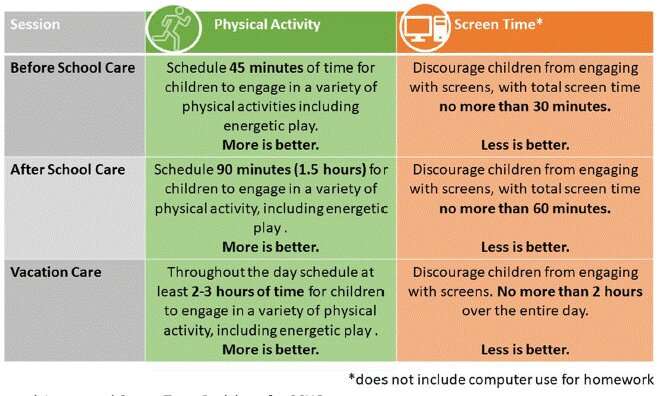More exercise, fewer screens: New Australian guidelines for kids in OSHC

Groundbreaking research from the University of South Australia has delivered world-first national-level guidelines to better inform children's physical activity and screen time in Outside School Hours Care (OSHC).
Developed with input from the OSHC sector, the guidelines aim to address growing concerns of children's sedentary behaviour marked by an increase in regular screen time. Research shows that 31-79 percent of OSHC sessions are sedentary.
The guidelines specifically encourage energetic play while discouraging screen use:
- Before School Care should schedule 45 minutes of physical activities and no more than 30 minutes of screen time.
- After School Care should schedule 90 minutes of physical activities and no more than 60 minutes of screen time.
- Vacation Care should schedule at least 2-3 hours of physical activities and no more than two hours of screen time across the whole day.
UniSA Ph.D. candidate Rosa Virgara and Professor Carol Maher found that for children to achieve sufficient physical activity during OSHC, it should be provided on a 3:1 ratio—that is, that three times the opportunity for exercise is needed for children to achieve sufficient physical activity during OSHC.
In Australia, less than one in four children achieve the recommended 60 minutes of physical activity each day. On average, primary school-aged children (aged 5-14) spend more than two hours each day sitting or lying down for screen-based activities.
With about 10 percent of Australian primary school children attending OSHC each year—and these hours accounting for 30 percent of a child's potential daily recommended physical activity—the guidelines have the potential to affect many children on a regular basis.
UniSA's, Rosa Virgara says having the OSHC sector on board was critical to initiating change.
"Working closely with a broad range of OSHC stakeholders—including OSHC directors and educators, families, health and exercise experts—we've established consistent and workable guidelines to boost children's physical activity while also limiting screen time," Virgara says.
"The main physical activity concept across all aspects of OSHC was that it should be play-based and fun, with ample opportunity for free active outdoor play, rather than being structured and run like a physical education class.
"The emphasis on free play is consistent with other research that shows that over half of children's physical exercise is accumulated during outdoor free play.
"Screen time, if offered at all, should be limited and balanced with physical activities, while quiet sedentary activities should be available to allow children to self-regulate and move freely between active and quiet play."
Senior study author, Professor Carol Maher says that the next steps are to disseminate the new guidelines nationally, and develop resources that help OSHC staff understand their role in promoting healthy physical activity and screen use in OSHC, particular given the transient, casual basis of the OSHC workforce.
"To bring about these changes, OSHC staff will need to be supported with training to help them facilitate physical activities effectively," Prof Maher says.
"It will also be important to connect with children and families to help them understand and accept the new changes, and particularly in relation to screen time.
"Helping kids stay happy and healthy is a responsibility for which we all play a part. It's pleasing to see Australia's OSHC centres so keen to make positive change."
More information: Rosa Virgara et al, Development of Australian physical activity and screen time guidelines for outside school hours care: an international Delphi study, International Journal of Behavioral Nutrition and Physical Activity (2021). DOI: 10.1186/s12966-020-01061-z




















